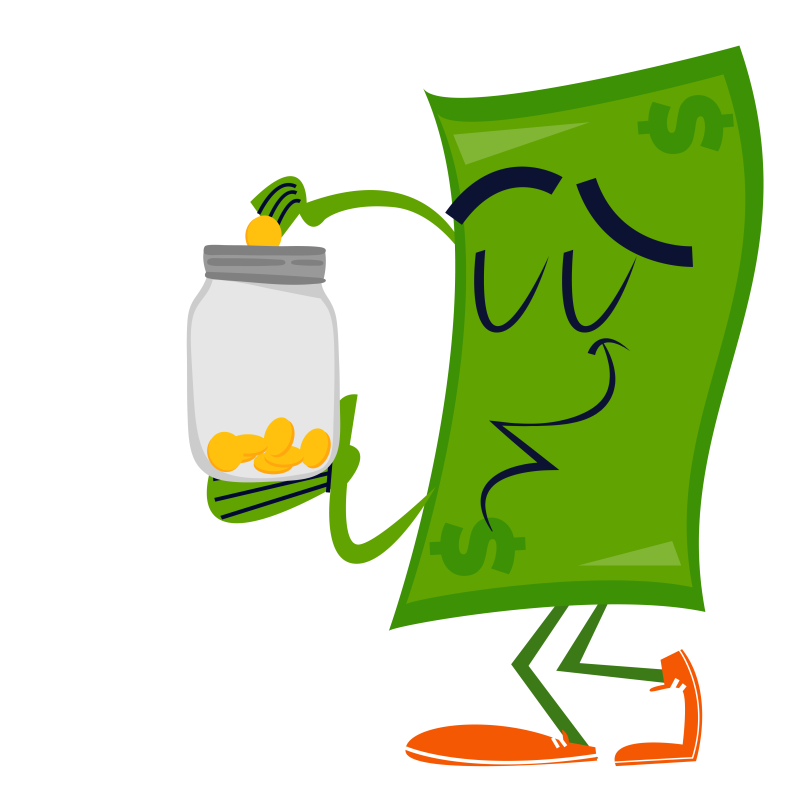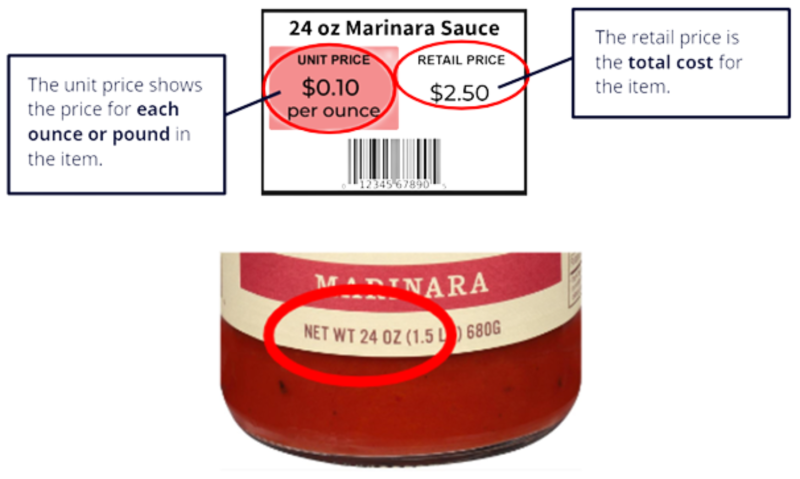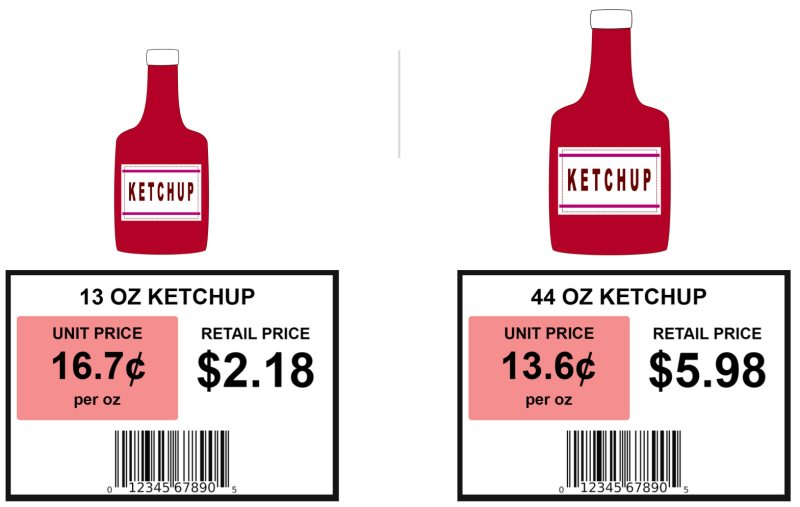
The unit price is a great tool in the grocery store. You can save money by comparing prices of similar items to find the best deal. The unit price tells you the cost of an item based on the weight or volume of that item.

What is Unit Pricing?
The unit price is shown on the shelf price tag. You’ll see two prices: the total cost (or “retail price”) and the unit price. The unit price is the cost for a specific amount of the product, like per ounce or per pound.
For example, a price tag on a 24-ounce jar of pasta sauce might show the unit price as the price per ounce of sauce.
Unit pricing helps you compare the cost of different sizes or brands of the same item. It tells you exactly how much you’re paying per ounce or per pound, so you don’t have to guess which package is the best deal.
Here are some things to keep in mind when comparing unit prices:
- Larger packages are often cheaper. Bigger packages tend to have a lower unit price, but this is only a good deal if you can use it all before it spoils. If some of the product will go bad, it may not save you money in the end.
- Bigger isn’t always better. Sometimes smaller packages have the same unit price and sometimes the smaller packages even end up with a lower unit price! So check the unit price every time.
- Sales and coupons change the price. If an item is on sale or you’re using a coupon, you’ll often need to figure out the new unit price yourself. Don’t forget to adjust the unit price when there’s a discount on the total price.

How to Calculate Unit Price
To calculate the unit price of any item, divide the total cost (the retail price) by the weight or volume of the item. Here's an example:
If you have a 10 oz can of beans that costs $1.50, you'll divide $1.50 by 10 ounces.
$1.50 ÷ 10 = $0.15 per ounce.
TIP: If you are using a coupon, make sure to subtract the coupon value from the total cost before doing the calculation above.

Compare to Find the Best Deal
Once you know how to find the unit price, you can compare different sizes or brands to find the best value. For example:
Ketchup A $2.18 for 13 oz → $2.18 ÷ 13 = $0.167 per oz
Ketchup B $5.98 for 44 oz → $5.98 ÷ 44 = $0.136 per oz
Even though the larger bottle costs more overall, it’s a better deal because each ounce is cheaper. Just be sure you have enough space in your fridge and can use the ketchup before it spoils!

